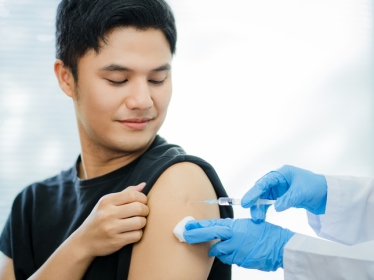How is a Colonoscopy Procedure Done?
Ever wondered how colonoscopies are done? This #colorectalcancer month, learn with Dr Eugene Yeo, General and Colorectal Surgeon of TEN Surgery (a member of Healthway Medical), as he demonstrates the complete colonoscopy procedure.
Transcript
0:05 | Hi, my name is Eugene, and I'm a General and Colorectal Surgeon. As part of my work, not only do I do surgery, but also spend a significant amount of time doing an endoscopy such as colonoscopy. |
0:15 | Colonoscopy is a very important investigation to investigate any lower intestinal tract symptoms. Also, it can be used for screening for polyps or cancer in the general population. Today, I want to bring you through what it's like to do a colonoscopy and different issues that we may encounter while we're doing them. |
0:33 | So here is a colonoscopy. And I'm going to show you how the controls work and how we use it to navigate the patient's colon. So if you look at here, this is what we call the dials, which help us to control the instrument. And with the instrument, we can turn it go down, up, right, as well as left. This movements, including in and outward motion, as well as a rotational motion helps us to navigate to get to the end of the colon. |
1:05 | So not only can we move the scope, but we can also do certain maneuvers such as suctions where we can suck the fluid. Or we can even blow air to increase the size of the colon to allow us to see properly. And we can also wash to flush out any dirt or impurities from the colon and remove any blockages if necessary. |
1:24 | Because we don't have a real patient today, we're going to show you what we do in training, which is essentially doing scopes on a model. And you can see the model here, it's like a real colon with abdomen, and we can actually configure the intestine to a way that matches the difficulty of the learner. And so I'll just show you how to do a scope through this model. And we'll cover it up so that I cannot cheat and see where I'm going. |
1:47 | We first start by putting the scope through the anus, into the rectum and then we proceed with the scope from here. Basically, using the controls, I'm moving the scope around and turning the scope to move into the different turns and corners of the large intestine. As you move slowly, you have to readjust the length of the scope so that you don't cause any injury. Sometimes, you can do some flushing if necessary. |
2:19 | So now we've reached the end of the colon. Now the issue is we have to look for any polyps or any abnormalities along the way. At the same time, if we do see them, we removed them. Most of the time, we expected a withdrawal time of at least six minutes to ensure that the scope is done properly, and we don't miss any lesions. And of course, if we see one, for example, a polyp or tumor at the same time, we can remove it, we can take a biopsy, we can also tattoo it, which means put a mark on it, if the patient needs surgery so that we can identify during the surgery and find out where it is so that we can move it promptly. And that's how we do our colonoscopy. |




